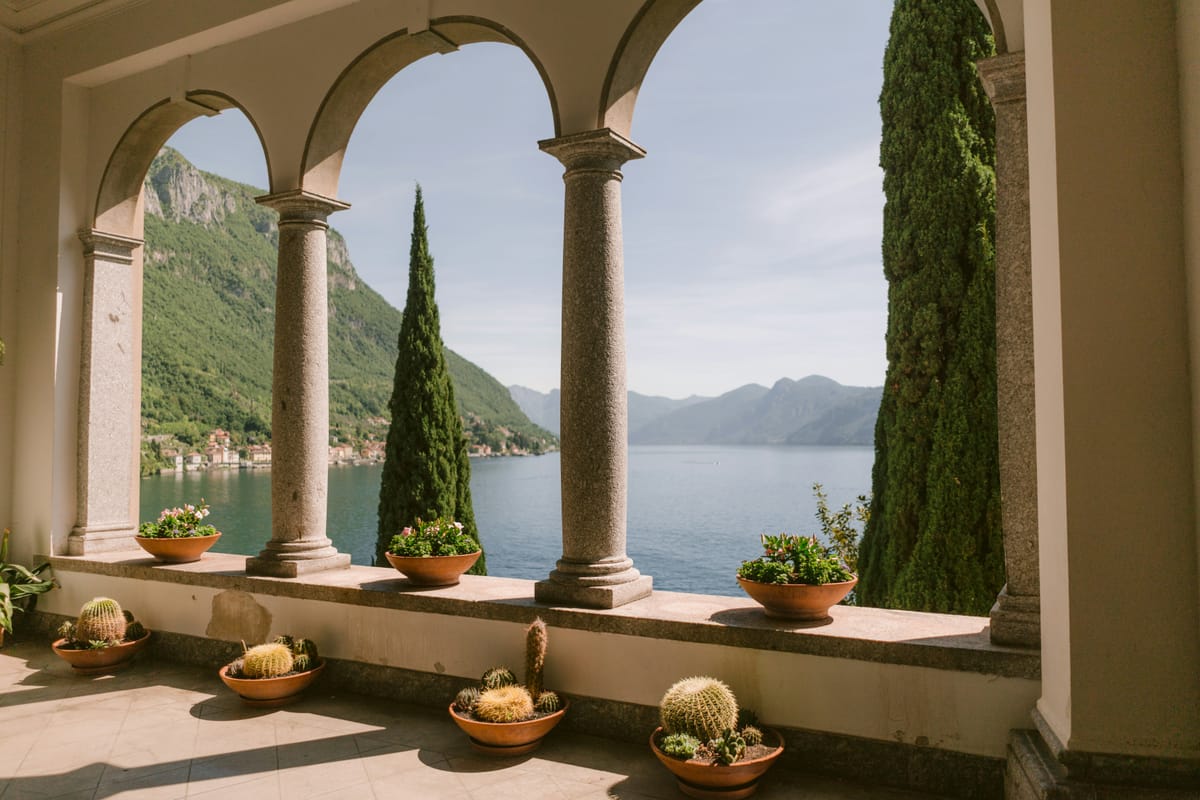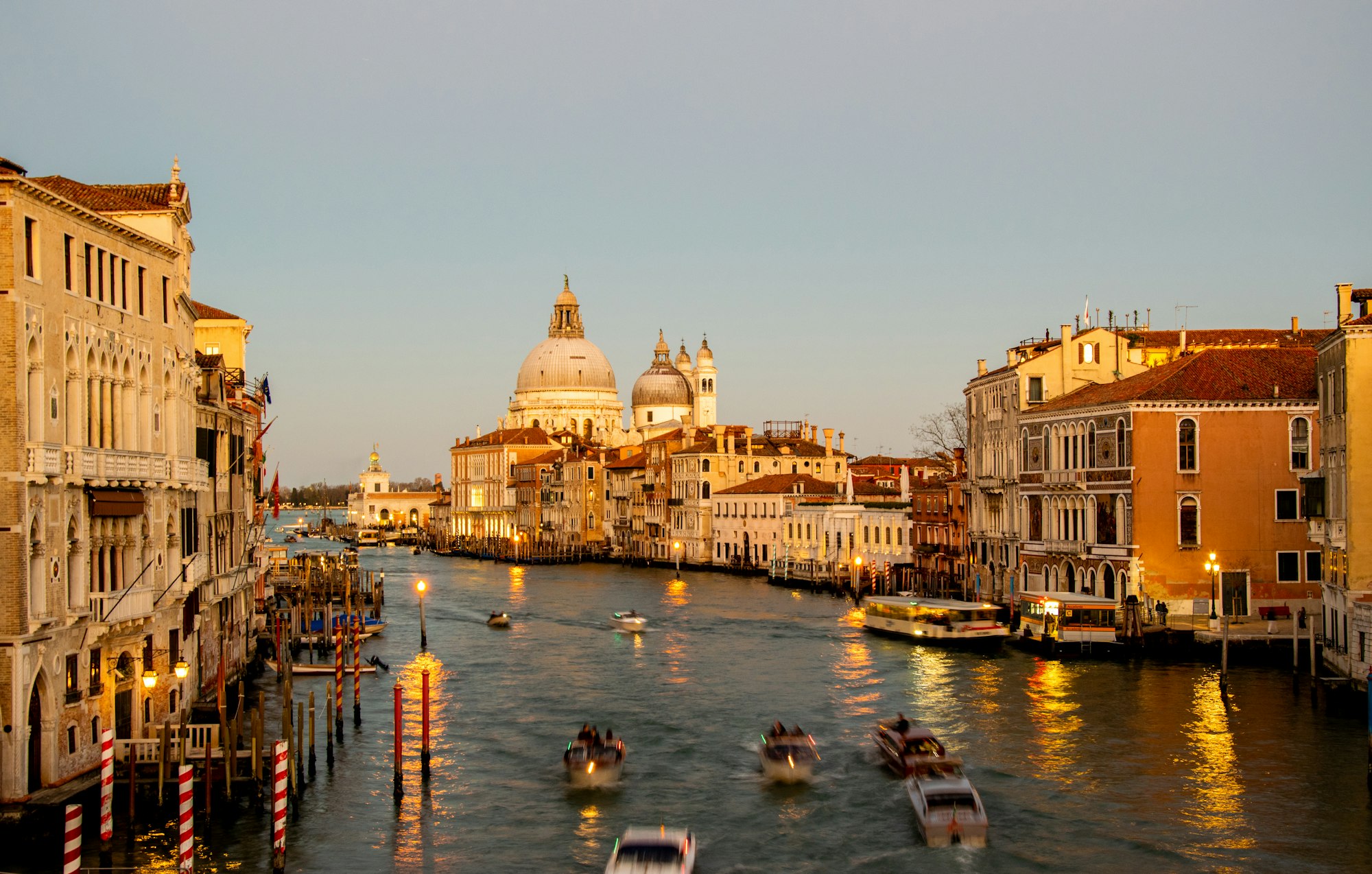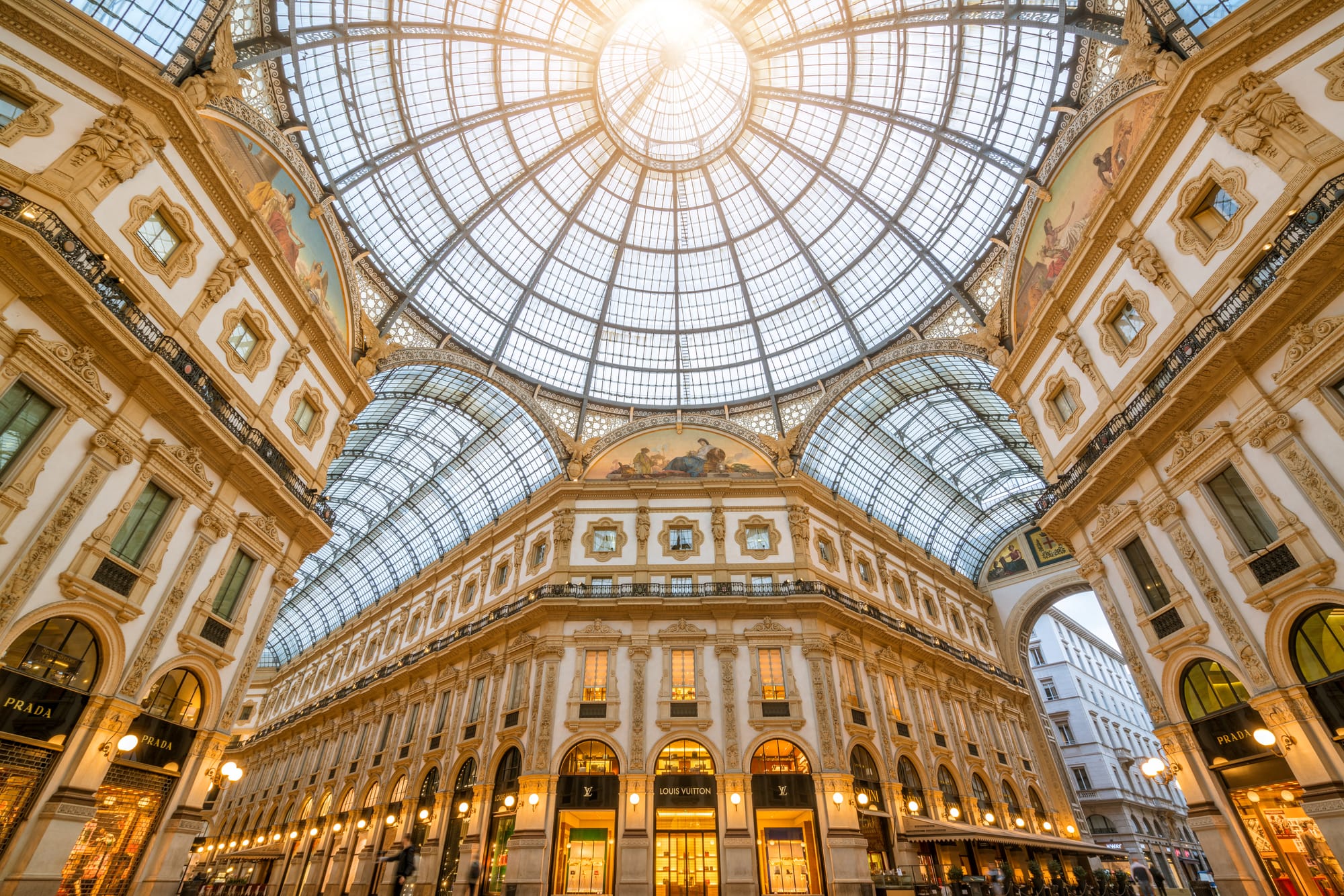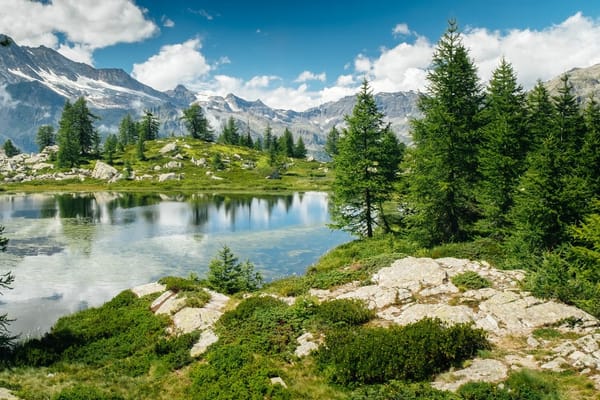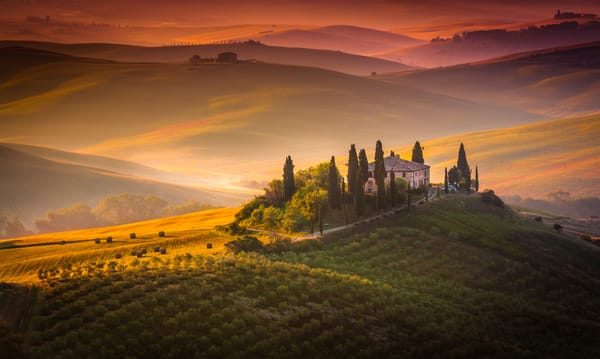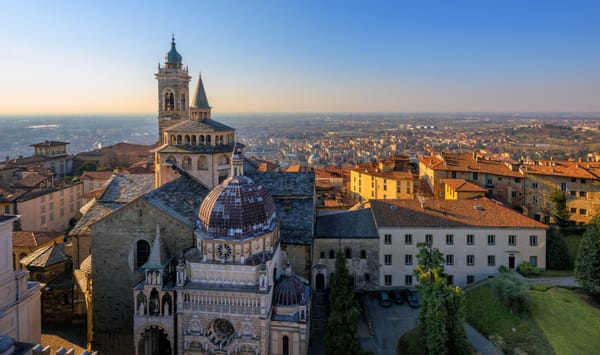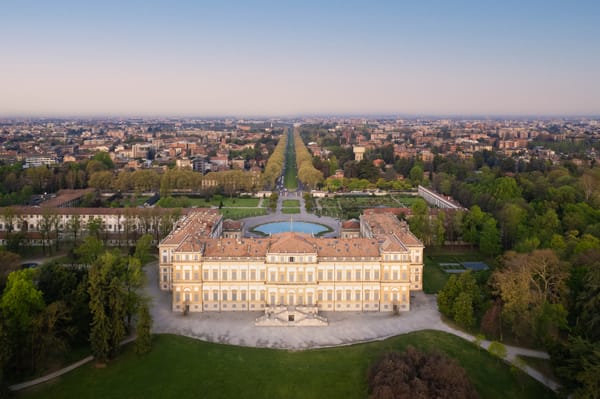Milan. The name itself evokes a powerful mix of high fashion, historic grandeur, and dynamic modernity. For the discerning traveler, it’s a city that defies easy categorization. It isn’t a living museum like Rome or a Renaissance jewel box like Florence. Instead, Milan offers something arguably more compelling for the independent spirit: a vibrant, living metropolis where centuries of art and culture collide with cutting-edge design and a palpable sense of forward momentum. This is Italy's engine room, its window to the future, yet a city deeply rooted in a rich and complex past.
This guide is an invitation to look past the glamorous facade and discover a Milan that is at once sophisticated, surprising, and deeply authentic. From scaling the marble spires of its iconic cathedral to uncovering secret courtyards and savoring centuries-old recipes, this is your definitive roadmap to experiencing the true essence of the Lombard capital.
Why visit Milan? The city of subtle charms
While other Italian cities might offer a more immediate, romanticized beauty, Milan’s appeal is a slow burn, rewarding those who take the time to explore its multifaceted identity. It is a city of substance, where history is not just preserved but is an active part of daily life. Its allure doesn't shout; it whispers, revealing itself in the details—a hidden fresco in an unassuming church, the clean lines of a rationalist building, the clinking of glasses during the evening aperitivo.
A crossroads of history and modernity
Milan's story is one of conquest, creativity, and resilience. It was a capital of the Western Roman Empire (Mediolanum), a powerful medieval duchy under the Visconti and Sforza families, a focal point of the Enlightenment in Italy, and the engine of the country's post-war economic boom. This layered history is visible everywhere, from the Roman ruins tucked away in quiet courtyards to the grand neoclassical arches celebrating Napoleonic victories and the striking rationalist architecture of the 20th century. Today, this historical tapestry provides the backdrop for a global capital of fashion, finance, and design, creating a unique tension and synergy that is utterly captivating. It's a city where you can admire a futuristic skyscraper in the morning and stand before a Michelangelo sculpture in the afternoon.
An unrivaled capital of art and culture
Beyond Leonardo da Vinci's monumental The Last Supper, Milan houses some of Italy’s most prestigious art collections. The Pinacoteca di Brera holds masterpieces by Raphael, Caravaggio, and Mantegna in a setting that is itself a piece of history. The Castello Sforzesco boasts an incredible array of civic museums, including Michelangelo’s final, heart-wrenching sculpture, the Pietà Rondanini. The city's cultural offering is not confined to the past; it is a living, breathing entity. Foundations like the Fondazione Prada and Pirelli HangarBicocca showcase world-class contemporary art, while smaller independent galleries thrive in districts like Lambrate. For lovers of the performing arts, a night at the legendary Teatro alla Scala is an unforgettable pilgrimage.
The epicenter of Italian design and style
To visit Milan is to immerse oneself in the very concept of "Made in Italy." This is where global trends are born, not just in fashion but in furniture, industrial design, and architecture. Exploring the flagship stores of the Quadrilatero della Moda is an experience in aesthetic perfection, but the city’s design spirit is also found in the innovative showrooms of the Brera and Tortona districts. This creative energy culminates each spring during the world-renowned Salone del Mobile (Furniture Fair), when the entire city transforms into a sprawling exhibition of creativity and innovation, proving that for Milan, design is not just a business—it's a language.
A gateway to the Italian north
Milan's strategic location makes it the perfect hub for exploring some of Italy's most stunning landscapes. The majestic Alps, the serene beauty of Lake Como and Lake Maggiore, the vineyards of Franciacorta, and the historic cities of Bergamo and Pavia are all just a short train ride away. This allows the sophisticated traveler to combine a dynamic urban experience with the tranquility and charm of the Italian countryside, making Milan an unparalleled base for a comprehensive Northern Italian journey.
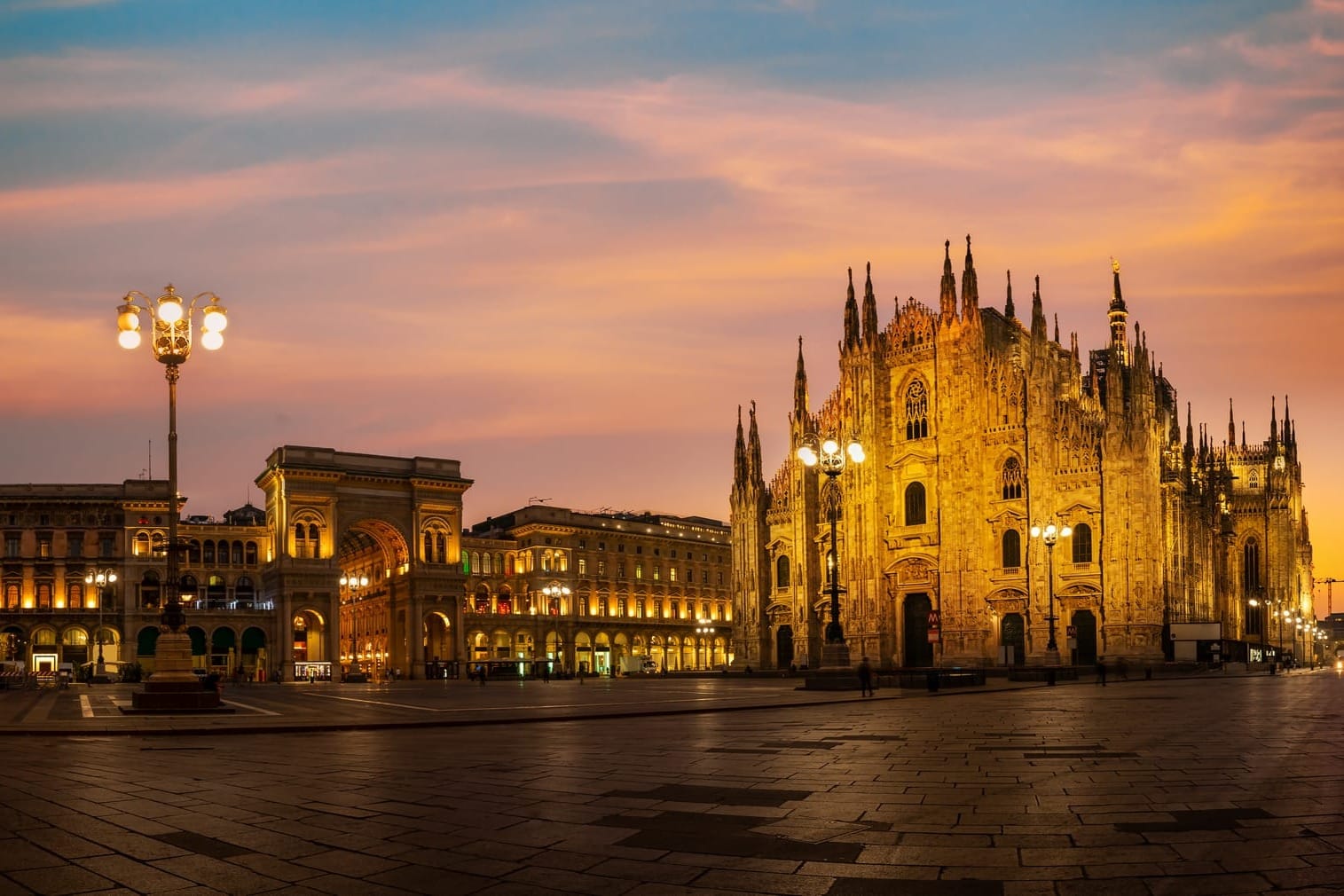
Milan's unmissable icons: a journey through history and grandeur
While the true Milan reveals itself in its hidden corners, its iconic landmarks are the essential starting point for any visit. These are the sites that have defined the city’s skyline and its spirit for centuries.
The Duomo di Milano: a marble masterpiece
The undisputed heart of the city, Milan's cathedral is a breathtaking spectacle of Gothic architecture that took nearly six centuries to complete. Its facade is a forest of spires, statues, and gargoyles, culminating in the golden Madonnina statue that watches over the city from its highest peak. The true magic, however, lies in a visit to the rooftop terraces. Ascending via elevator or stairs, visitors can walk among the flying buttresses and pinnacles, enjoying an unparalleled panoramic view of Milan and, on a clear day, the distant Alps. The interior is equally vast and awe-inspiring, with magnificent stained-glass windows casting a kaleidoscopic light across the nave.
Leonardo da Vinci's The last supper
Housed in the refectory of the Santa Maria delle Grazie convent, this iconic mural is one of the world's most famous works of art. Leonardo’s genius in capturing the humanity and drama of the moment Christ reveals his impending betrayal is palpable. Viewing is a strictly controlled and intimate experience; tickets must be booked months in advance, as only a small group is allowed in for a 15-minute slot. This is a non-negotiable pilgrimage for any art aficionado.
Galleria Vittorio Emanuele II: the world's most elegant arcade
Connecting Piazza del Duomo with Piazza della Scala, this magnificent 19th-century glass-vaulted arcade is often called "il salotto di Milano" (Milan's drawing room). It’s a masterpiece of iron and glass architecture, home to historic cafés, luxury boutiques like Prada and Gucci, and the renowned Savini restaurant. Don't miss the tradition of spinning on the heel on the mosaic bull under the central dome for good luck.
Teatro alla Scala: the temple of opera
For over 200 years, La Scala has been the world's premier opera house. Its neoclassical facade may seem understated, but its opulent, red-and-gold interior has witnessed the triumphs of composers like Verdi, Puccini, and Rossini, and performers from Maria Callas to Luciano Pavarotti. For those not attending a performance, the adjoining museum offers a fascinating glimpse into the theater's history and a chance to see the magnificent auditorium from a box.
Castello Sforzesco: a fortress of art
Once the formidable residence of Milan’s ruling Sforza dynasty, this vast castle is now a cultural citadel. It houses a collection of civic museums with treasures ranging from ancient artifacts in the archaeological museum to an outstanding collection of decorative arts. The undeniable highlight is the Museo d'Arte Antica, home to Michelangelo’s final, deeply moving sculpture, the Pietà Rondanini, left unfinished at his death. Behind the castle lies Parco Sempione, the city’s largest green space, perfect for a relaxing stroll.
The Brera District: the artistic soul of Milan
More than just a neighborhood, Brera is an experience. Its cobblestone streets, ivy-clad buildings, and car-free lanes create a bohemian-chic atmosphere that feels a world away from the city's grand avenues. This is Milan's artistic heart, home to the prestigious Accademia di Belle Arti (Academy of Fine Arts) and its crown jewel, the Pinacoteca di Brera. The gallery holds one of Italy's most important collections of Italian paintings, including masterpieces like Mantegna's Lamentation over the Dead Christ and Caravaggio's Supper at Emmaus. Beyond the Pinacoteca, the Palazzo Brera also contains the Braidense National Library and a historic Botanical Garden, a small, enchanting oasis of tranquility. The district is filled with independent boutiques, antique shops, art galleries, and charming cafés where artists, students, and locals mingle. To wander through Brera is to understand the city's deep-seated passion for beauty and culture.
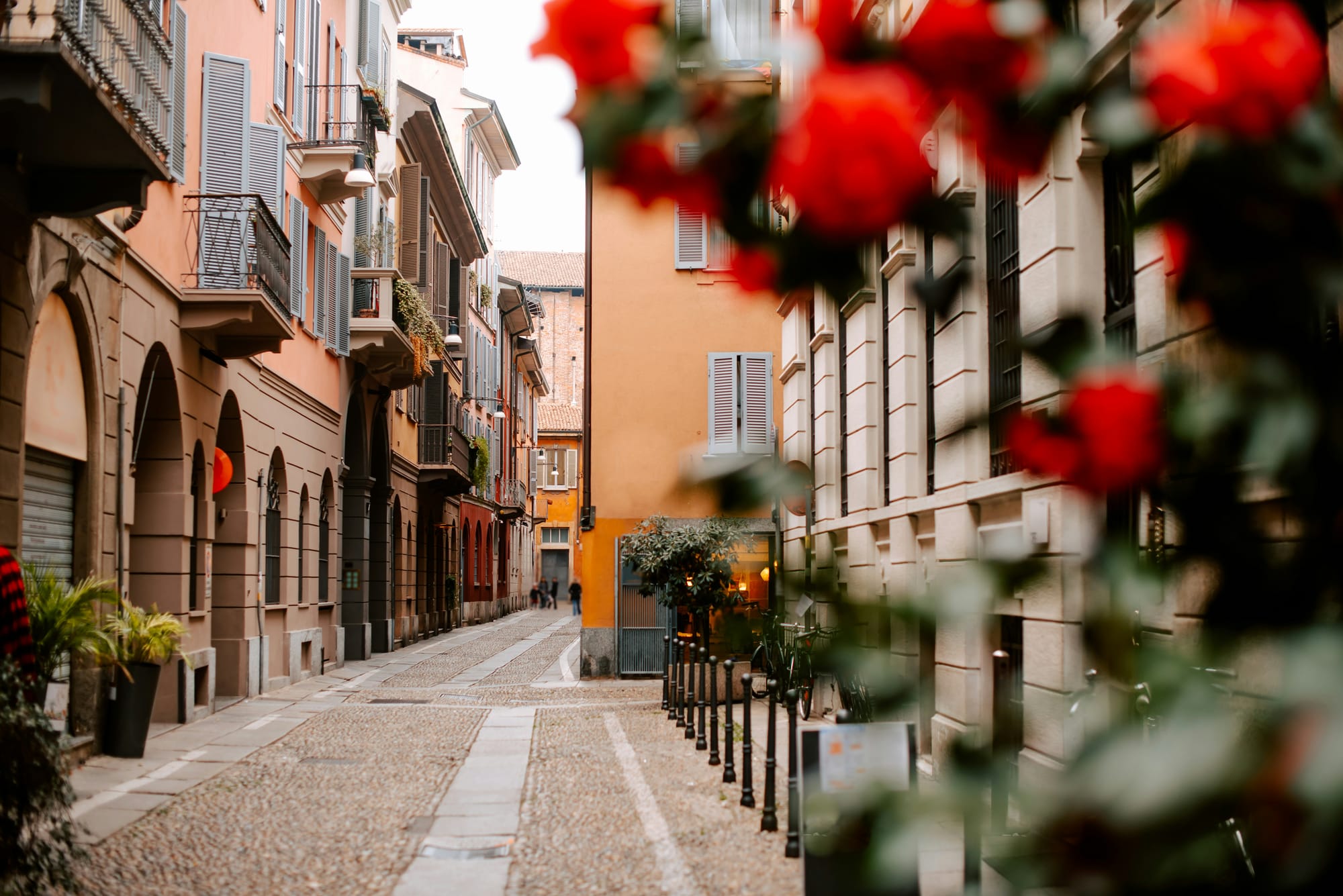
Hidden gems and secret treasures: beyond the tourist trail
For the traveler who seeks authenticity, Milan’s greatest rewards lie away from the main piazzas. These are the places that reveal the city's more intimate, surprising character.
San Maurizio al Monastero Maggiore: Milan's Sistine chapel
Tucked away on Corso Magenta, a short walk from The Last Supper, this unassuming church hides an interior of astonishing beauty. Every surface of the wall and ceiling is covered in vibrant 16th-century frescoes, primarily by Bernardino Luini, a prominent follower of Leonardo. The church is divided into two sections—one for the public and a more private hall for the nuns—both lavishly decorated. Its sheer artistic density makes it one of Italy’s most breathtaking, yet often overlooked, sacred spaces.
The Quadrilatero del silenzio: an oasis of Art Nouveau
Just a stone's throw from the bustling fashion district lies the "Quarter of Silence." This elegant residential area is a treasure trove of Liberty (Italian Art Nouveau) and Art Deco architecture. Stroll down Via Serbelloni and Via Mozart to discover fantastical facades, including the whimsical "Ca' de l'Oreggia" (House of the Ear) with its ear-shaped intercom, and the flamboyantly pink flamingos that reside in the gardens of Villa Invernizzi (viewable from the street). The nearby Villa Necchi Campiglio, a perfectly preserved 1930s architectural masterpiece managed by FAI (The National Trust for Italy), offers a fascinating look into the lifestyle of the Milanese upper class.
Leonardo's vineyard (Vigna di Leonardo)
Directly opposite Santa Maria delle Grazie is a beautifully restored piece of history: the vineyard gifted to Leonardo da Vinci by Duke Ludovico Sforza in 1498. For years it was a hidden garden, but it has been meticulously replanted with the original grape variety. A visit here, combined with the Casa degli Atellani, offers a quiet, evocative glimpse into the world of the Renaissance genius.
The Navigli Canals at sunrise (and at sunset)
While the Naviglio Grande and Naviglio Pavese are famous for their buzzing aperitivo scene, they possess a different kind of magic in the early morning. A walk along the tranquil canals as the city awakens, with the iron railings of the traditional case di ringhiera (railing houses) reflected in the water, reveals a more poetic and authentic side of this historic district. Discover hidden courtyards, art galleries, and the charming Vicolo dei Lavandai, where women once washed their clothes. That being said, returning in the evening for the quintessential Milanese aperitivo along the canals is a vibrant, bustling experience that no visitor should miss.

The authentic Milan table: a gastronomic journey
Milanese cuisine is a reflection of the city itself: rich, elegant, and rooted in the fertile lands of the Po Valley. It’s a culinary tradition that favors slow-cooked meats, butter, and rice over the olive oil and tomato-based dishes of the south.
The essentials of Milanese cuisine:
- Risotto alla Milanese: The undisputed king of Milanese dishes. This creamy risotto is defined by its vibrant yellow hue, derived from precious saffron threads, and its rich flavor from beef marrow and Grana Padano cheese. Its origins are steeped in legend, dating back to the 16th century.
- Cotoletta alla Milanese: Not to be confused with the Wiener Schnitzel, the traditional cotoletta is a bone-in veal cutlet, pounded thin, breaded, and fried to a perfect golden crisp in clarified butter.
- Ossobuco: A hearty and flavorful dish of cross-cut veal shanks braised slowly with vegetables, white wine, and broth. It is traditionally served with gremolata (a zesty condiment of lemon zest, garlic, and parsley) and often accompanies Risotto alla Milanese.
- Panettone: The world-famous sweet, dome-shaped Christmas bread, studded with candied fruits and raisins, was born in Milan. Enjoying a slice from a historic pasticceria like Pasticceria Marchesi or Cova is a rite of passage, no matter the time of year.
The Aperitivo ritual
More than just a happy hour, the aperitivo is a cherished social institution in Milan. Typically from 7 PM to 9 PM, bars and cafés across the city offer a sophisticated pre-dinner experience. Ordering a drink, such as a Negroni Sbagliato (invented in Milan at Bar Basso) or a glass of Franciacorta sparkling wine, gives you access to a generous buffet of small plates, from cheeses and cured meats to pasta salads and mini pizzas. The Navigli and Brera districts are popular hotspots, but for a more local experience, explore the side streets around Arco della Pace or in the Porta Romana neighborhood.
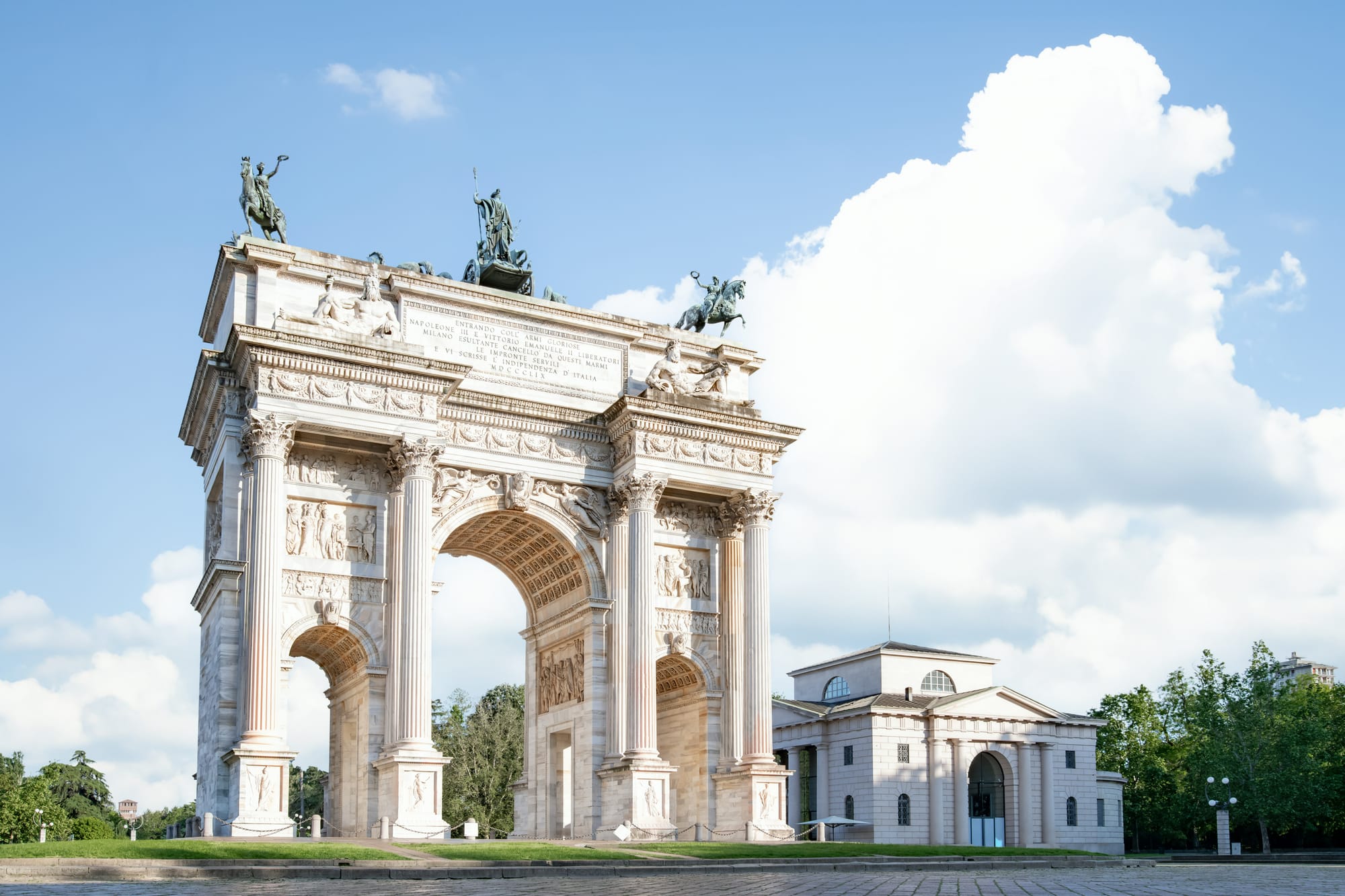
Practical guide to Milan for the curious traveler
When to visit Milan
Spring (April-June) and early autumn (September-October) offer the most pleasant weather for exploring the city on foot. These months also coincide with major events like Milan Design Week (April) and Fashion Week (September/October), which bring a vibrant energy but also higher prices and crowds. Winter can be chilly and foggy, but it's a great time to enjoy the city's cozy cafés and museums without the tourist throngs.
Getting around
Milan boasts an efficient and easy-to-navigate public transport system (ATM), including a metro, trams, and buses. The metro is the fastest way to cover long distances. The historic trams, some dating back to the 1920s, offer a more scenic way to see the city. Consider purchasing a multi-day travel card for convenience. The city center is very walkable, and exploring on foot is the best way to make unexpected discoveries.
Navigating the airports
Milan is served by three airports. Malpensa (MXP) is the main international gateway, connected to the city center by the Malpensa Express train and buses. Linate (LIN) is closer to the city and is best reached by bus or taxi. Orio al Serio (BGY), near Bergamo, is a major hub for low-cost carriers and is connected by frequent bus services.
Where to stay in Milan
- Centro Storico (Duomo): Ideal for first-time visitors who want to be in the heart of the action.
- Brera: The artistic soul of Milan, with charming cobblestone streets, boutiques, and a bohemian-chic atmosphere.
- Navigli: Perfect for those who enjoy a lively nightlife scene and a romantic, canal-side setting.
- Porta Venezia / Quadrilatero: For luxury travelers and fashion enthusiasts, this area offers high-end hotels and proximity to the best shopping.
- Porta Romana: A more residential and authentic neighborhood with excellent restaurants and good transport links.

Frequently asked questions for the Milan traveler
Is Milan a safe city for tourists?
- Milan is generally a safe city. However, like any major urban center, it's wise to be aware of your surroundings, especially in crowded areas like the Duomo square and on public transport, where pickpocketing can occur.
How many days are needed to see Milan?
- A minimum of three full days is recommended to cover the major highlights and get a feel for the city's atmosphere. With four to five days, you can explore more hidden gems and even take a day trip to a nearby lake or city.
Is it necessary to book tickets for attractions in advance?
- Absolutely, especially for The Last Supper, which can sell out three to four months in advance. It is also highly recommended to book tickets online for the Duomo (especially the rooftop access) and major museums like the Pinacoteca di Brera to avoid long queues.
What is the dress code for visiting churches?
- When visiting the Duomo and other churches, a respectful dress code is enforced. Both men and women should ensure their shoulders and knees are covered. It's a good idea to carry a light scarf or shawl for this purpose during the warmer months.
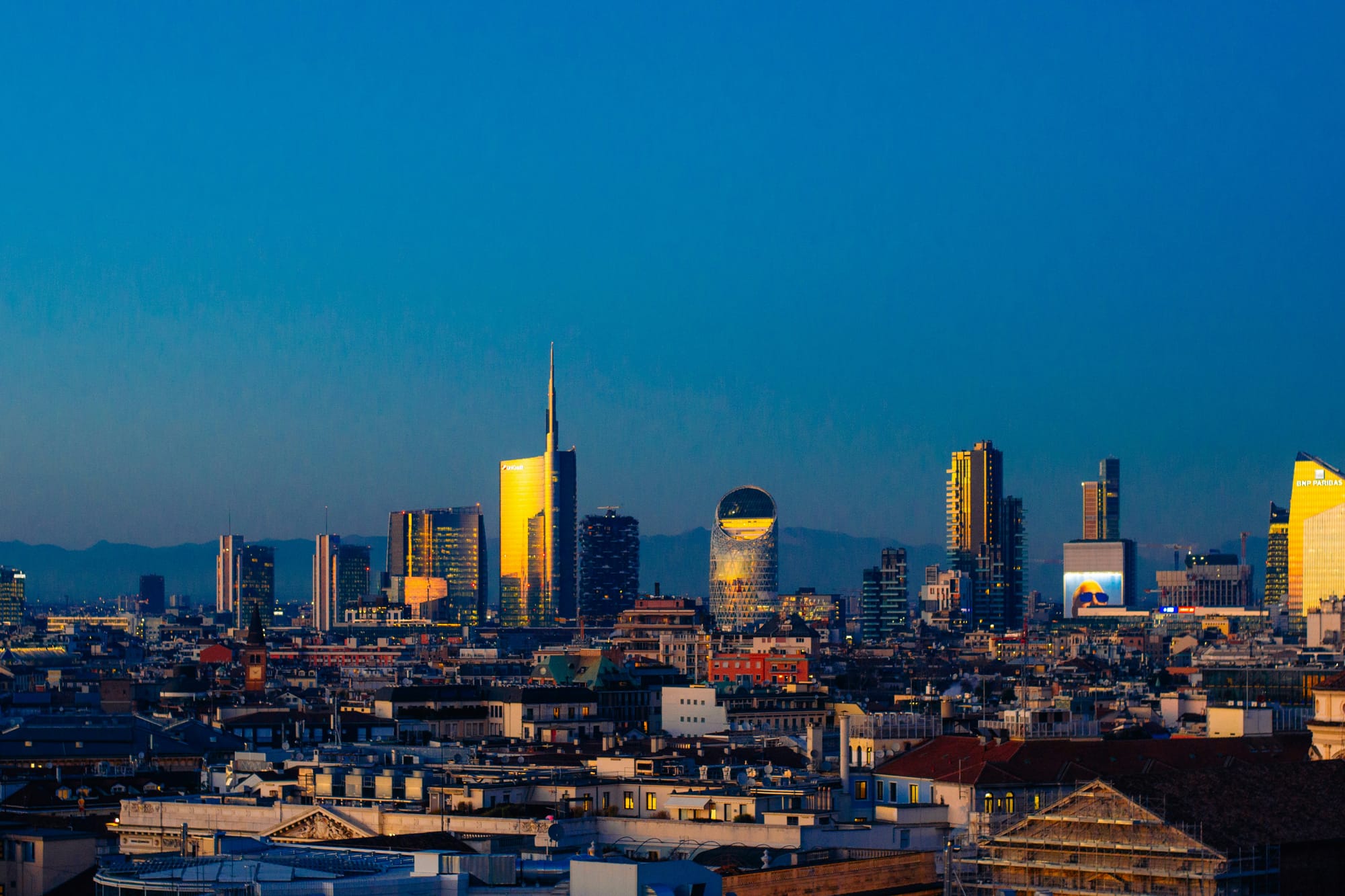
Milan does not lay all its cards on the table at once. It’s a city that asks for a little effort from its visitors, a certain level of curiosity, and in return, it offers rewards that are both profound and deeply personal. It is in the quiet elegance of a hidden courtyard in the 5Vie district, the intellectual buzz of a Brera café, the shared ritual of an evening aperitivo along the Navigli, and the sublime, private beauty of a 16th-century fresco that the true Milan is found. It resists simple definitions, compelling the traveler to look closer and engage with its complex, sophisticated spirit.
This is a city that has mastered the art of living well, where aesthetic beauty is not an afterthought but is woven into the fabric of daily life. It seamlessly blends its profound history—the legacy of da Vinci, the Sforzas, and Verdi—with an unshakeable vision for the future, visible in its bold architecture and world-leading design. For the traveler who seeks to go deeper, who is not content with merely seeing but wishes to understand, Milan is not just a destination. It is a conversation between past and present, a masterclass in understated elegance, and an unforgettable experience in authentic Italian style, culture, and life itself.
And for those ready to explore further, Milan serves as the perfect gateway. To discover the stunning beauty of Lake Como or to combine your visit with the magic of Venice, be sure to consult our complete guides for your next Italian chapter.
